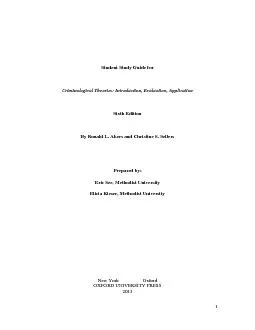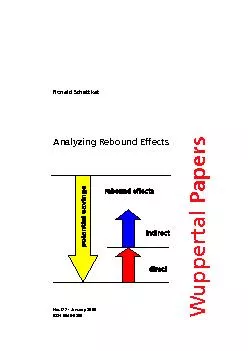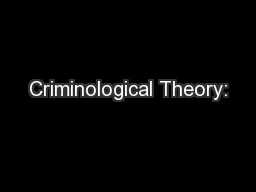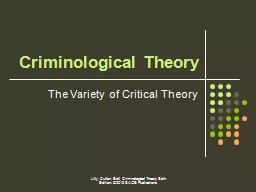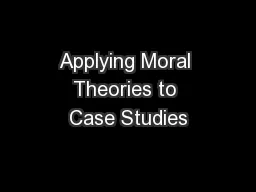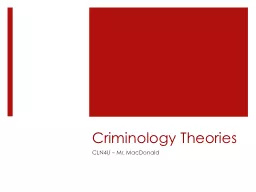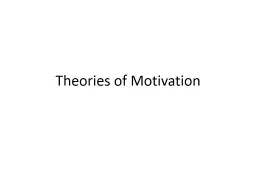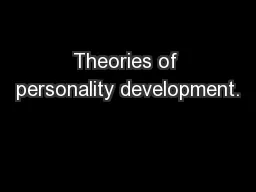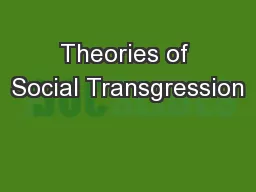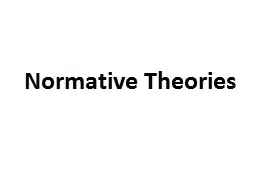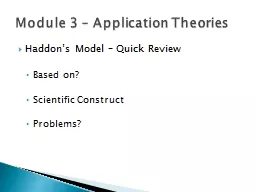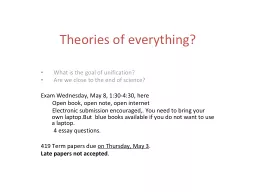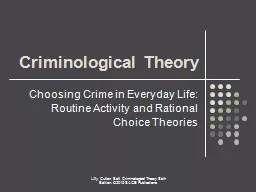PDF-Criminological Theories: Introduction, Evaluation, ApplicationBy Ronal
Author : danika-pritchard | Published Date : 2016-05-24
Introduction to Criminological Theory A concept more applicable to the hard sciences Does the appearance of X cause effect Y In a perfect relationship the appearance
Presentation Embed Code
Download Presentation
Download Presentation The PPT/PDF document "Criminological Theories: Introduction, E..." is the property of its rightful owner. Permission is granted to download and print the materials on this website for personal, non-commercial use only, and to display it on your personal computer provided you do not modify the materials and that you retain all copyright notices contained in the materials. By downloading content from our website, you accept the terms of this agreement.
Criminological Theories: Introduction, Evaluation, ApplicationBy Ronal: Transcript
Download Rules Of Document
"Criminological Theories: Introduction, Evaluation, ApplicationBy Ronal"The content belongs to its owner. You may download and print it for personal use, without modification, and keep all copyright notices. By downloading, you agree to these terms.
Related Documents

